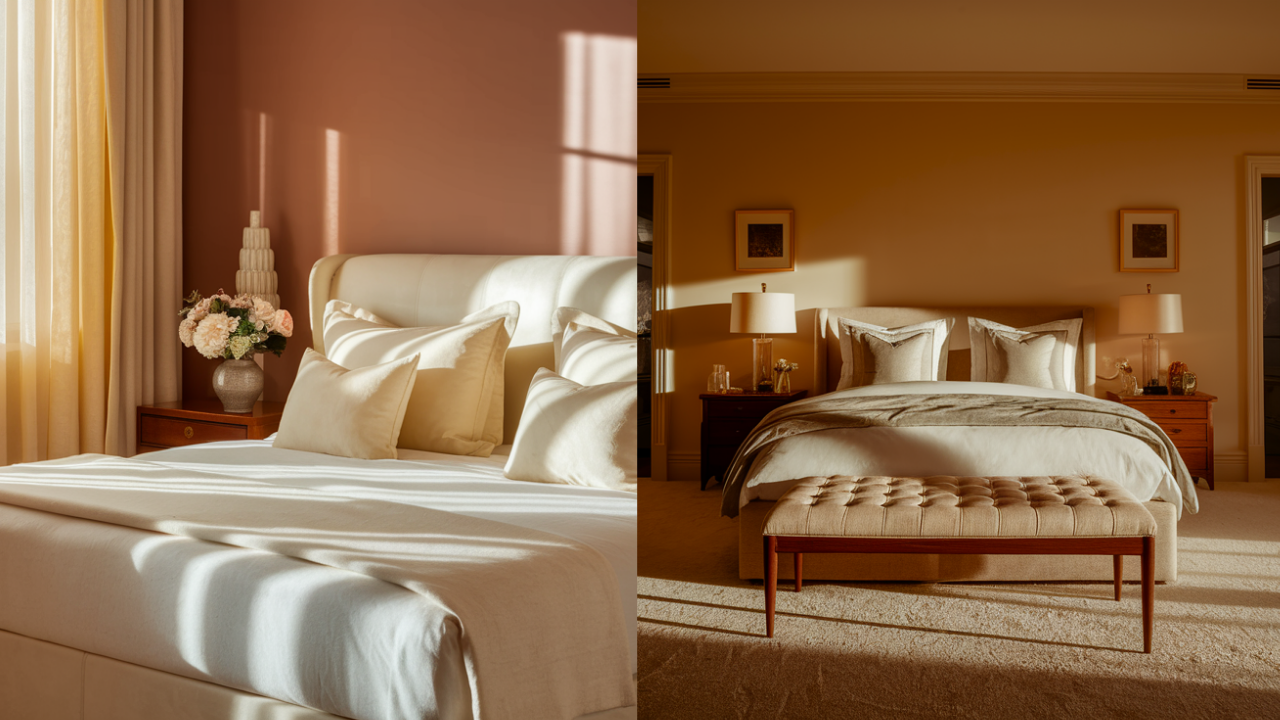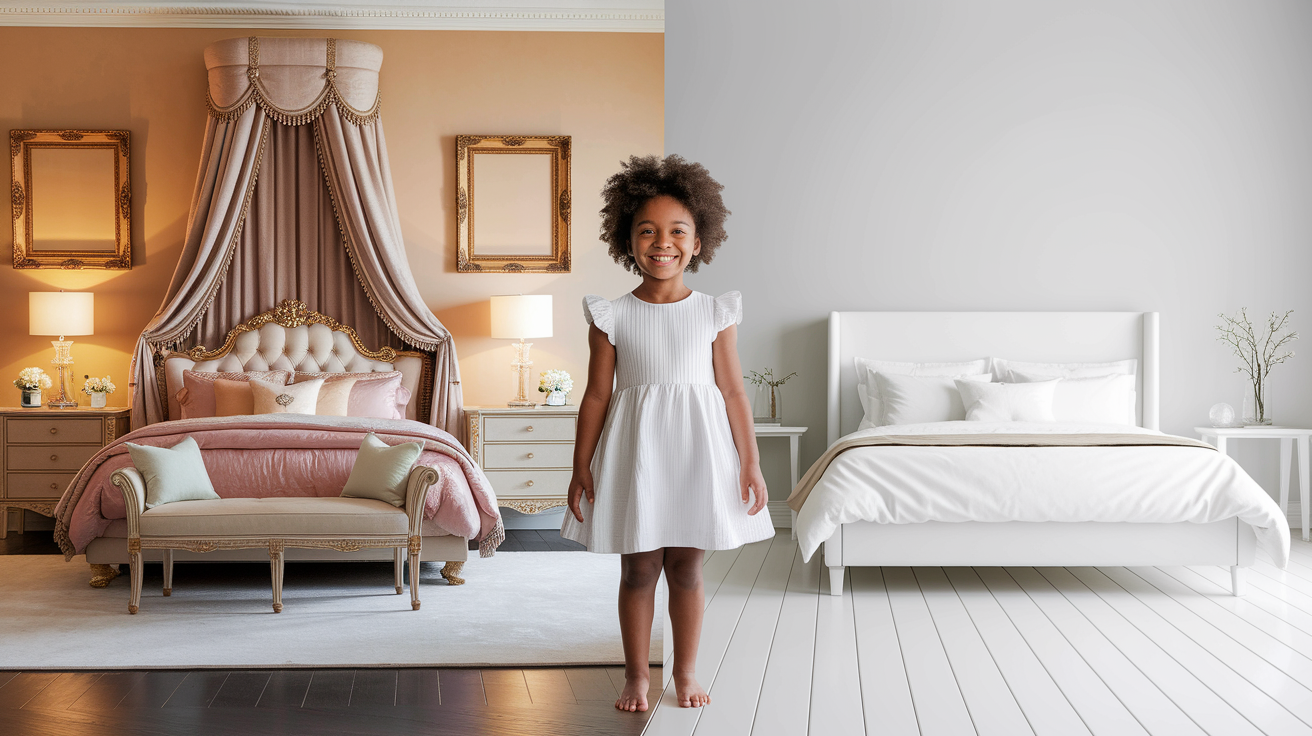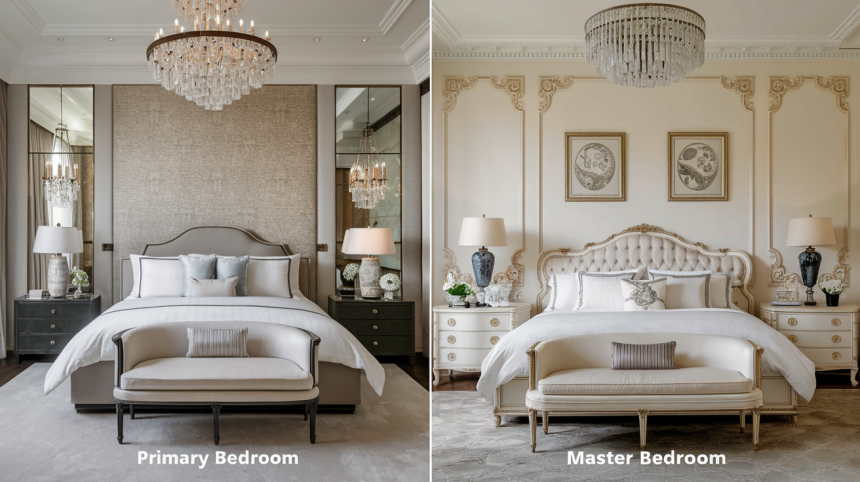Language changes constantly, reflecting shifting cultural values and social awareness—and home terminology is no exception.
The transition from “master bedroom” to “primary bedroom” represents more than a simple vocabulary swap; it signifies a deliberate move toward inclusive, historically conscious language in real estate and interior design.
This change has sparked conversations among homeowners, real estate professionals, and design experts about the power of words and their hidden implications.
While some view it as necessary progress, others question if it’s an overcorrection.
This guide examines both terms, their historical context, the reasoning behind the shift, and how this linguistic evolution affects property listings, architectural plans, and everyday conversations about our most personal spaces.
Concept of Master Bedroom and Primary Bedroom

The term “master bedroom” first showed up in a 1926 Years catalog, advertising houses with a larger bedroom.
It was meant to show luxury and importance.
| Term Origin | Historical Issues |
|---|---|
| • First used in the 1926 Sears catalog | • “Master” links to slavery and ownership |
| • Meant to show a bigger, fancier bedroom | • Has male-centered meanings |
| • Became common in house plans after 1926 | • Suggests the man is head of household |
| • Originally a marketing term | • Creates feelings of inequality |
The term “primary bedroom” emerged around 2020 as the real estate industry sought more inclusive language.
It provides a neutral alternative to describe a home’s main bedroom.
“Primary bedroom” simply identifies the largest bedroom in a home without any loaded connotations, focusing purely on the room’s function rather than suggesting ownership or dominance.
Master Bedroom vs. Primary Bedroom: Key Differences
| Aspect | Master Bedroom | Primary Bedroom |
|---|---|---|
| Connotation | Hierarchical, potentially problematic | Neutral, functional description |
| Historical associations | Links to slavery, ownership, patriarchy | No negative historical associations |
| Industry adoption | Traditional term, still used in some regions | Increasingly standard in progressive markets |
| Gender implications | Subtly male-centered | Gender-neutral |
| Usage in new construction | Declining in blueprints and plans | Growing standard in architectural designs |
| Marketing impact | May alienate some buyers | Generally well-received by diverse buyers |
| Regional preference | More common in conservative/rural areas | More prevalent in urban/coastal markets |
| Future outlook | Gradually declining in professional use | Expected to become industry standard |
The Shift to “Primary Bedroom”

The movement to replace “Master Bedroom” with “Primary Bedroom” gained significant momentum in 2020.
Several major real estate organizations made official recommendations that year:
- June 2020: The Houston Association of Realtors became one of the first to officially drop “master bedroom” from their Multiple Listing Service (MLS).
- Summer 2020: The Real Estate Standards Organization (RESO) and the National Association of Realtors (NAR) began discussions about standardizing the new terminology.
- Late 2020: Major home builders and interior design publications started adopting “primary bedroom” in their materials.
- 2021-2022: Gradual adoption spread across real estate listings, architectural firms, and home design shows.
- 2023-2024: Wider mainstream acceptance, though usage remains mixed depending on region.
Reasons Behind the Change
The shift from “master bedroom” to “primary bedroom” addresses historical slavery connotations while promoting inclusive, gender-neutral language in real estate.
Major industry organizations have endorsed this change to accommodate diverse homebuyers better and modernize property marketing terminology.
Historical Concerns
The term “master bedroom” has faced scrutiny due to its historical slavery connotations and ownership implications.
These associations prompted industry professionals to reconsider terminology that evokes painful historical contexts.
Growing awareness led housing professionals to seek neutral alternatives respecting all potential homebuyers.
Inclusivity Efforts
“Primary bedroom” represents a move toward inclusive language that accommodates diverse family structures without gender-specific terminology.
This updated phrasing eliminates potential power dynamic implications that could make some clients uncomfortable.
Gender-neutral language helps create more welcoming environments for all individuals in housing transactions.
Industry Backing
Major organizations including the Chicago Association of Realtors, NAHB, and companies like Zillow and Redfin have formally adopted “primary bedroom” terminology.
This adoption extends to architectural firms updating their recommended terminology in blueprints and marketing materials.
The industry shift represents a modernization effort to welcome an increasingly diverse home-buying population.
Public Perception and Acceptance

Homebuyer Awareness
Most younger homebuyers have seamlessly accepted the new terminology, often unaware there was ever a different term used.
Geographic differences remain noticeable, with urban markets showing higher adoption rates than some rural areas.
The transition has happened with minimal resistance from typical buyers, who are primarily focused on home features rather than what they’re called.
Cultural Sensitivity
The shift represents part of a broader societal movement toward language that acknowledges historical context and avoids unintentional harm.
This change shows how industries can evolve their terminology without disrupting their core functions or creating confusion.
For many buyers and homeowners, the change represents a small adjustment that creates a more welcoming environment for all.
Does the Name Change Affect Home Value or Buyer Interest?

Impact on Home Value
Currently, there is no substantial evidence to suggest that renaming the “master bedroom” to “primary bedroom” directly affects a property’s market value.
Factors such as location, size, condition, and overall features of the property play a more significant role in determining its value.
The terminology used to describe the main bedroom has not been shown to influence appraisal values or selling prices.
Influence on Buyer Interest
While the terminology change itself may not directly impact home value, it can influence buyer perception and interest:
-
Positive Perception: Using the “primary bedroom” can be viewed positively by buyers who value inclusive and modern language, potentially enhancing their overall impression of the property.
-
Neutral Impact: Some buyers may not be influenced by the terminology used, focusing instead on the room’s features, size, and functionality.
Conclusion
The shift from “master bedroom” to “primary bedroom” exemplifies how language can change better to reflect our shared values of inclusivity and respect.
As with any terminology change, adoption happens gradually, with varied acceptance across different regions, age groups, and industries.
What matters most isn’t rigidly policing language but understanding the reasoning behind these changes and making informed choices about the words we use when discussing our homes.
The terminology we choose for our living spaces ultimately reflects our broader cultural values—and the conversation surrounding these terms provides an opportunity to consider how language shapes perception and experience.
Which term do you use in your home or professional work?
Share your thoughts in the comments below!

